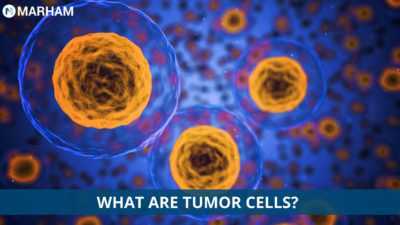There are various kinds of cells in our body that perform their specific functions to keep our body in order. For example, white blood cells help our body fight infections. Surprisingly our body also produces tumor cells that can contribute to various diseases in the body. So, how are tumor cells different from normal cells? Have a look at this health blog and find out everything you need to know.
6 Differences Between Tumor Cells and Normal Cells
The differences given in this section will hopefully answer the question of how are tumor cells different from normal cells. Keep reading below:
1. Tumor Cells Keep Dividing
The body’s signals to stop dividing are ignored by tumor cells. Your body has a built-in mechanism called apoptosis, often known as programmed cell death, that signals it to get rid of cells it no longer requires. Normal cells are better at listening to they pay attention to the body’s cues and cease replicating when there are enough cells. But this process does not work on tumor cells.


2. Rapid Maturation
Normal cells differentiate into several cell types as they age. All of these cell types have a distinct purpose. For instance, red blood cells assist your body in transferring oxygen to all the cells. Cancerous cells divide so fast that they never get a chance to develop and become the specialized cells that they were designed to be.
3. Tumor cells may influence normal cells.
Tumor cells may really influence the activity of normal cells, molecules, and blood vessels in the region of a tumor. These cells, for example, may recruit normal cells to form new blood vessels. By supplying oxygen and nutrients to the tumor, these veins keep it alive and allow it to expand.


4. Tumor cells trick the immune system.
You must know that your immune system aids in the battle against infection and illness. Normally, the immune system eliminates defective or damaged cells. However, tumor cells are able to avoid this process, allowing tumors to proliferate.
5. Tumor cells are invasive.
When cancer cells disobey the body’s signals to cease proliferating, they begin invading neighboring tissues. A benign tumor may press up against nearby tissues but will not infect them. A malignant tumor invades tissue and has the potential to spread throughout the body.
6. Tumor cells can spread to different places of the body.
Normal cells are aware of their surroundings and stay put. Tumor cells that have spread to other places of the body are said to be metastatic. Cancer, for example, might begin in the lungs and migrate to the liver. If this spread happens, it is referred to be metastatic lung cancer rather than liver cancer.


Formation of Tumor Cells
In a normal body, the cells are killed off as they get old or injured, and new cells replace them. This organized process occasionally breaks down, allowing abnormal or defective cells to grow and reproduce when they should not. These cells can combine to produce tumors, which are tissue masses. Tumors can be either malignant or non-cancerous.
Cancerous tumors infiltrate neighboring tissues and can move to distant locations in the body to generate new tumors (a process known as metastasis). Many cancers create solid tumors, while blood malignancies, such as leukemia, do not.
Detection of Tumor Cells


Though cancer cells may fool your body and hide inside it, doctors have several methods for detecting and diagnosing cancer, including:
1. Laboratory tests
Certain chemicals are often found in high or low concentrations in cancer patients. These drugs may be detected by blood and urine testing. It is critical to understand that having an abnormal test result does not imply that you have cancer. Your doctor may discuss the findings and future actions with you.
2. Imaging tests
Some of the imaging procedures used to identify cancer include:
- computed tomography / CT scans
- ultrasounds
- positron emission tomography (PET) scans
- magnetic resonance imaging (MRI) scans
- bone scans, X-rays
- nuclear scans
3. Biopsies
Doctors usually perform a biopsy to diagnose cancer. Your doctor will take a tiny sample of tissue during a biopsy. The tissue is inspected under a microscope and subjected to a battery of tests. They may get a biopsy sample using a needle, surgery, or a technique in which a tiny tube containing a light and camera is introduced into the body. Tools may also be passed into the tube in order to obtain a tissue sample for examination.
Symptoms of Tumor in the Body
Some of the common signs and symptoms of a tumor in the body can include:
- chills
- discomfort or pain
- fatigue
- fever
- loss of appetite
- night sweats
- weight loss
Consult an Oncologist Now!
If you have any of the symptoms of the tumor given above you must consult an oncologist to get diagnosed with cancer as soon as possible. Book an appointment now, to answer all your queries.
You can book an appointment with Best Oncologists in Lahore through Marham by calling at Marham helpline: 0311-1222398 or by online appointment booking facility through the website or Marham mobile app.
Can’t Find The App?
Android Users:
https://play.google.com/store/apps/details?id=controllers.marham.marhammed&hl=en
Drop a review for us at Playstore if you’ve had a good experience!
iPhone Users:
https://apps.apple.com/pk/app/marham-find-a-doctor/id1095243102
Stay Home Stay Safe!
FAQs
1. How are cancer cells different from normal cells give three examples?
Cancer cells are abnormal cells that divide uncontrollably, they do not have a specific life span and mature more rapidly than normal cells.
2. How does a normal cell become a cancer cell?
Certain mutations in a person’s genes can cause normal cells to transform into cancer cells.
3. Do cancer cells live longer than normal cells?
Cancer cells are not like normal cells so they do not have a specific life span.

